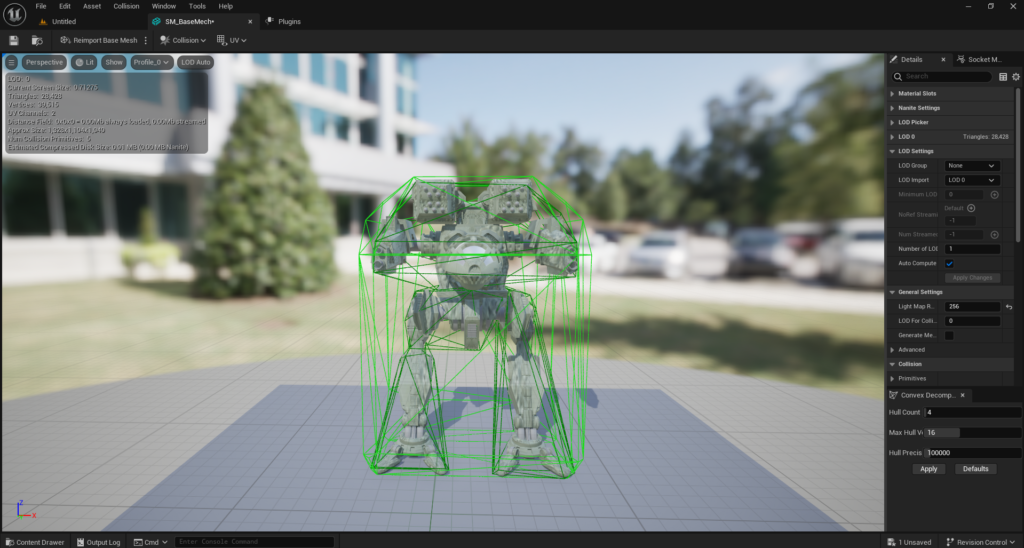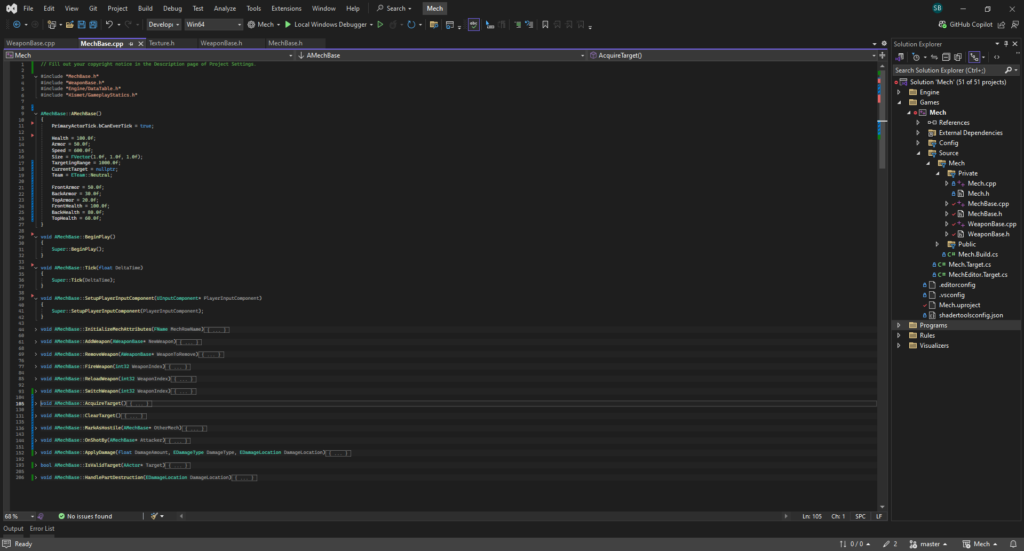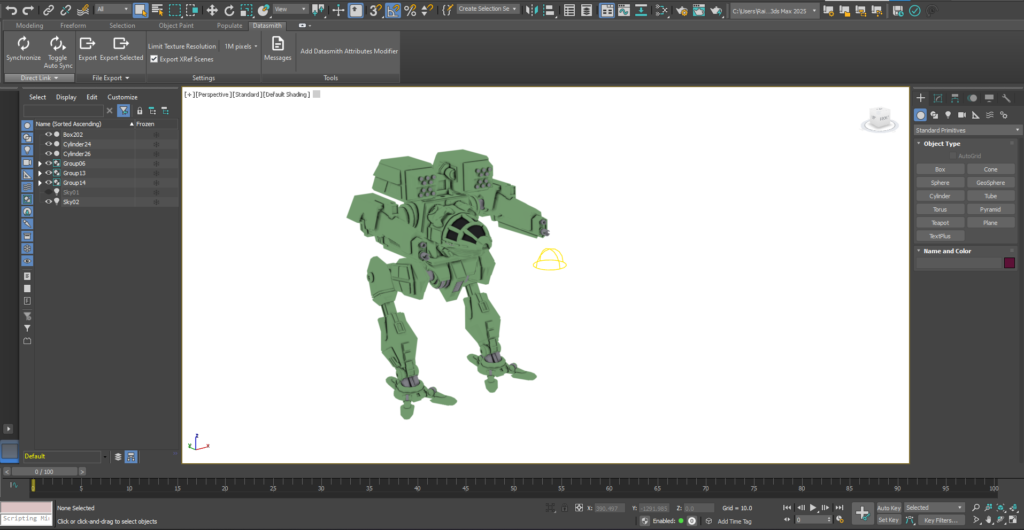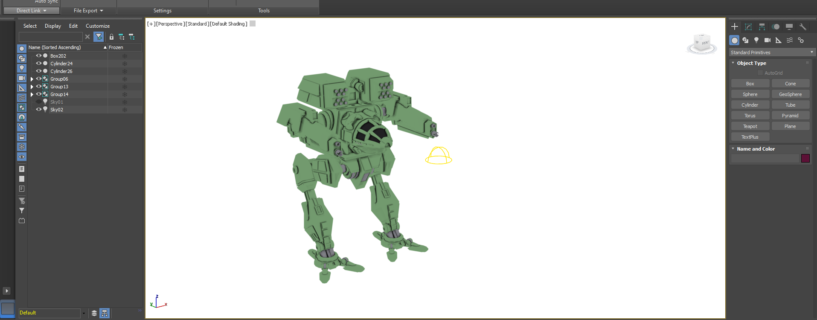`
Update I

Yes, I am fully aware the Collision system is a mess…it’s my mess thank you.
Welcome to the first update on the development progress of Project Mech. This niche yet ambitious venture aims to bring to life a customizable, mech-based game, allowing users to engage deeply with an intricate world of mechanized units and strategic combat. From the outset, the primary focus has been to lay down a solid foundation—an essential first step that involves the development of the base mech and weapon classes.
Beginning with the design of the base mech, a significant amount of time was invested in ensuring its versatility and robustness. This foundational element serves as the core unit around which various customization options will revolve. The base mech is designed to be highly adaptable, with modular components that can be easily integrated or replaced in future development phases. This modularity is crucial in sustaining long-term engagement and providing endless possibilities for users to craft their unique mechanized warriors.
The creation of weapon classes followed closely behind. These initial classes form the backbone of the combat system, each defined by a unique set of attributes that influence gameplay dynamics. Balancing these weapon classes has been a task fraught with intricate detail, demanding extensive iterations and rigorous testing. The goal is not only to offer a variety of tactical options but also to maintain equilibrium across different styles of play. Ensuring that no particular class dominates the battlefield is essential for fostering a fair and compelling gaming experience.
Challenge-wise, developing such complex systems from scratch is no small feat. There were inevitable roadblocks, including technical glitches and conceptual rewrites, each providing invaluable learning experiences. Opting for a methodical approach allowed for resolving these issues without compromising the project’s core vision. The journey ahead promises more intricate challenges but also thrilling opportunities for innovation.
Looking forward, the next updates will delve deeper into the customization mechanisms, refining gameplay systems, and introducing more layers of strategic depth. This is just the beginning of what aims to be an ever-evolving project, continually shaped by feedback and advanced by each development milestone.
Creating the Base Mech and Weapon Classes

A critical initial milestone in the development of ‘Project Mech’ was the creation of foundational elements: the base mech class and weapon class. These core classes function as the archetypal frameworks from which all other mechs and weapons in the project are derived, enabling both flexibility and scalability throughout the game’s evolutionary cycle.
The base mech class is meticulously designed to encapsulate essential attributes that define a mech’s in-game behavior and capabilities. Key attributes within this class include armor, which dictates the mech’s defensive fortitude; speed, which influences movement and maneuverability; and energy capacity, a crucial factor determining the mech’s operational longevity and ability to employ various systems and weaponry.
On the other hand, the weapon class was developed to manage characteristics central to weapon performance. This includes damage, reflecting the offensive power of the weapon; range, which determines the effective distance over which the weapon can engage targets; and ammunition type, reflecting different requirements and effects based on the ammunition used. These elements are pivotal for creating an immersive and strategically complex gameplay environment.
Adopting an Object-Oriented Programming (OOP) approach, the design principles behind the base mech and weapon classes emphasize extensibility and modularity. By establishing clear and robust interfaces, these classes are engineered to be easily extendable, allowing for future subclasses to inherit and build upon their functionalities without disrupting existing systems. This modular framework ensures that addition of new weapons or mechs can be seamlessly integrated into the game.
To ensure that these classes remain scalable, we employed best coding practices such as the use of design patterns like Factory and Singleton, which facilitate efficient object creation and management. Rigorous adherence to coding standards and thorough documentation further support the maintainability and scalability objectives, making it straightforward for any development team members to extend functionality or troubleshoot issues as the project evolves.
Importing and Testing the First Mech

After laying the groundwork with the foundational classes that constitute the architecture of Project Mech, our next critical milestone involved importing an initial mech model. This served as a pivotal testbed for validating the newly established systems. Leveraging a placeholder mech, we embarked on a series of simulations aimed at scrutinizing the base mech and weapon classes. The primary objectives of this phase were to ensure that the imported model integrated seamlessly with the pre-existent systems and to identify any potential issues that could hamper performance or functionality.
The import process commenced with the selection of a suitable placeholder mech, embodying the fundamental characteristics we anticipated in our final designs. This mech was integrated into the development environment, enabling us to run multiple testing scenarios. These simulations encompassed various operational aspects, including movement algorithms, weapon firing sequences, and the mech’s general interaction within the game world. The primary focus was on assessing the responsiveness and stability of the mech under different conditions.
During the preliminary rounds of testing, several issues became apparent. One notable challenge was an unexpected lag in the weapon firing sequence, which was traced back to inefficient code within the weapon class. To resolve this, we optimized the firing algorithms, which significantly improved the performance. Additionally, there were minor glitches related to the mech’s movement, particularly in uneven terrains. These issues were systematically addressed by refining the collision detection and adjusting the mech’s physical attributes to better handle diverse environments.
The outcomes of these tests were generally positive, providing valuable insights into both the strengths and limitations of our current systems. Adjustments based on these findings led to enhanced stability and functionality of the mech model. By iterating on these tests and applying subsequent refinements, we ensured that our base mech now operates more reliably, readying the project for the inclusion of more complex features in future updates.
Future Plans and Fine-Tuning
Following the successful creation of base mech and weapon classes and the initial mech being imported for testing, the next phase focuses on enhancing the complexity and realism of mech behaviors and weapon interactions. Balancing mech stats presents the first challenge, as each mech needs to exhibit unique strengths and weaknesses. This will ensure a dynamic and strategic gameplay experience. By adjusting attributes such as armor, speed, and energy consumption, we’ll create varied roles for the mechs, making each feel distinct and valuable in different tactical scenarios.
Weapon performance optimization is another critical aspect requiring attention. The goal is to fine-tune factors like damage, range, rate of fire, and accuracy to maintain an engaging balance. For example, a high-damage weapon may have a slower rate of fire or limited range to prevent it from being overwhelmingly powerful. This balancing act will keep combat encounters intense and skill-based, rewarding players who can effectively manage their mech’s unique capabilities and their arsenal.
Further enhancing the gameplay are new features that are planned for introduction. Special abilities such as shield generation, stealth, and drone deployment will add layers of strategy and excitement. Implementing upgrade paths for both mechs and weapons will offer players progression and customization options, enabling them to tailor their playstyle and mech loadout to their preferences.
Lastly, I will outline a roadmap for the upcoming updates which will include these fine-tunings and feature implementations. This will help the community stay informed and engaged with ‘Project Mech.’ The planned updates will follow a structured timeline, with periodic releases focused on either specific systems improvements or content additions. Stay tuned for detailed patch notes and community feedback sessions to ensure that player input drives our development process.


 by Admin
by Admin